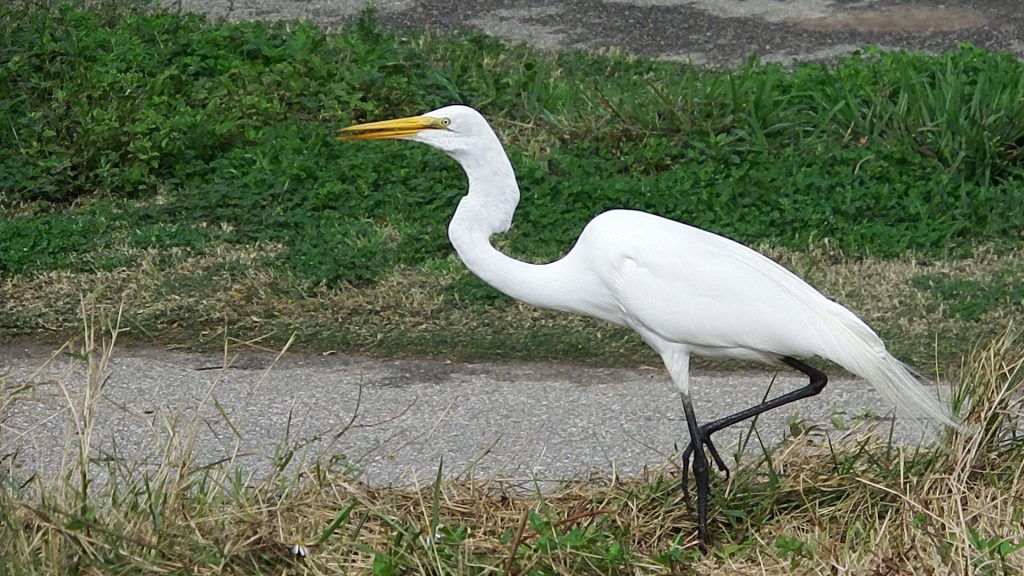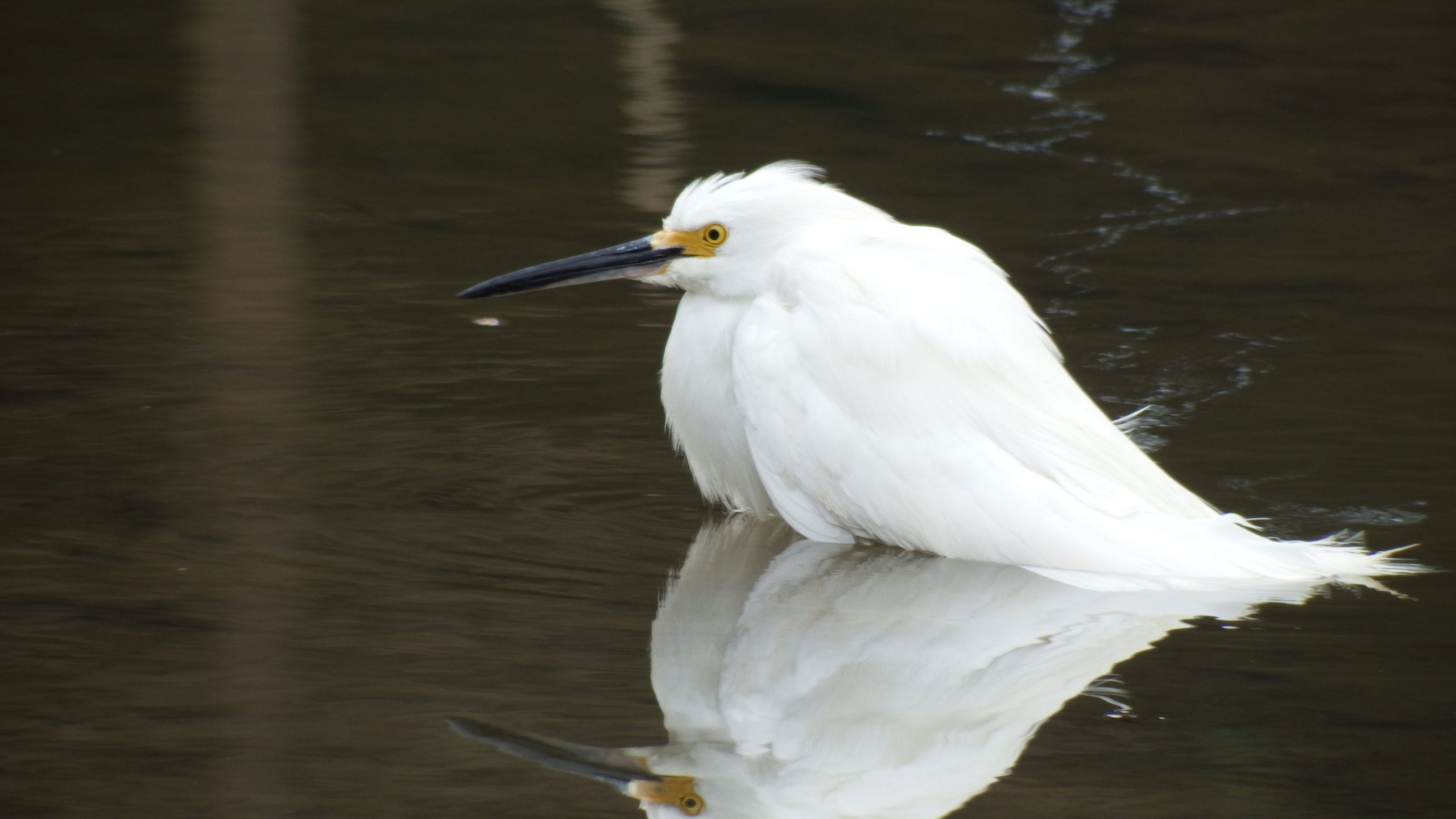Two Egrets Hunting

We have just one Park and just one bayou within it, but lots of different shore birds find ways of staying fed on the same basic diet (fish, amphibians, insects and crustaceans.) You might imagine, given that this, that our Park is a battleground of all against all. But that’s not what happens. Each animal hunts differently and because of that, they aren’t really competing with each other so much as divying up the spoils.
This week, we watch two birds try to eat.
Bird one is a planetary* great egret. Bird two is a snowy egret, likely the same one that kept losing to the cormorant in last week’s post. The great egret was very successful. The snowy egret, well, we might have to worry about this bird. The species specializes in creativity, but our guy might be pushing that strategy to new limits.
The Great Egret
The main great egret hunting strategies are 1. standing very still (this is used mostly at the edge of a body of water); and 2. stalking very slowly (this is used mostly on land).
The video below shows a great egret stalking. The way it moves is really strange. It is as if the bird reaches out its beak and grabs hold of a stationary object. Then, uses that grip to pull the rest of the body forward. I imagine the benefit of this is that the bird’s vision (which is sharp) stays maximally steady so as to detect any movement that might indicate prey.
During the video, the egret wobbled its neck a few times. It isn’t so obvious in this video, but in the next one neck wobbling is on full display.
That neck wobble is a hunting strategy. As we saw in the first video, a great egret stalking prey is all about limited motion. Except that neck wobble. The theory about the wobble is that it might induce movement in prey, but it doesn’t give away the exact location from which the strike will occur (head).
This next video shows a successful stalk, wobble and capture. It features more than just a wobble. This shows a full on neck wave strong enough to move the body along with it. It doesn’t intuitively seem a brilliant strategy, but the tasty lizard at the end proves otherwise.
I saw this great egret have three successful strikes during the 20 minutes or so I watched him.
The Snowy Egret
While great egrets use two, energy-conserving hunting strategies (standing and stalking), snowy egrets use lots of different and mostly energetic methods. Last week we watched the snowy chase after fish by running and flying. They also use stillness, like the great egret, but more often stir the bottom with their yellow feet, stirring up small prey, they stalk, they run, they dive from above, they use subterfuge, and then they make up new and heretofore unseen methods, that weren’t in this case successful, but must be more often than not or our well-fed snowy egret wouldn’t be so gorgeous!

This is a snowy egret in full breeding plumage. Likely the same one from last week’s post. I caught sight of him in the circular cement area where water flows in from storm drains. Not the one near Sabine bridge, but the one further west from there.
This bird seems to be using a strategy (not successfully) of dripping water from its bill to lure fish from deeper water to the surface. I haven’t found any references in the literature to this as hunting strategy employed by snowy egrets, but the video makes the behavior obvious and it is not unlike another deep-water hunting technique known to be used by snowies. They will wade into deep water and vibrate their bills, trying to mimic the vibrations of an insect trapped by surface tension. The fish/frog comes to the surface hoping for a meal only to become one.
The area this bird was in is full of red eared sliders (turtles). You can see their bubbles from time to time. Red eared sliders will eat small fish and other living creatures not just plants. So it isn’t far fetched to think that this might be a good hunting spot.
*I have decided to name all great egrets feeding away from the bayou “planetary.” When the ancient Greeks watched the night sky, they noticed that some of the stars wandered around. They named these stars wanderers, which in ancient Greek was apparently planetos. Which is how we got the word planet.

